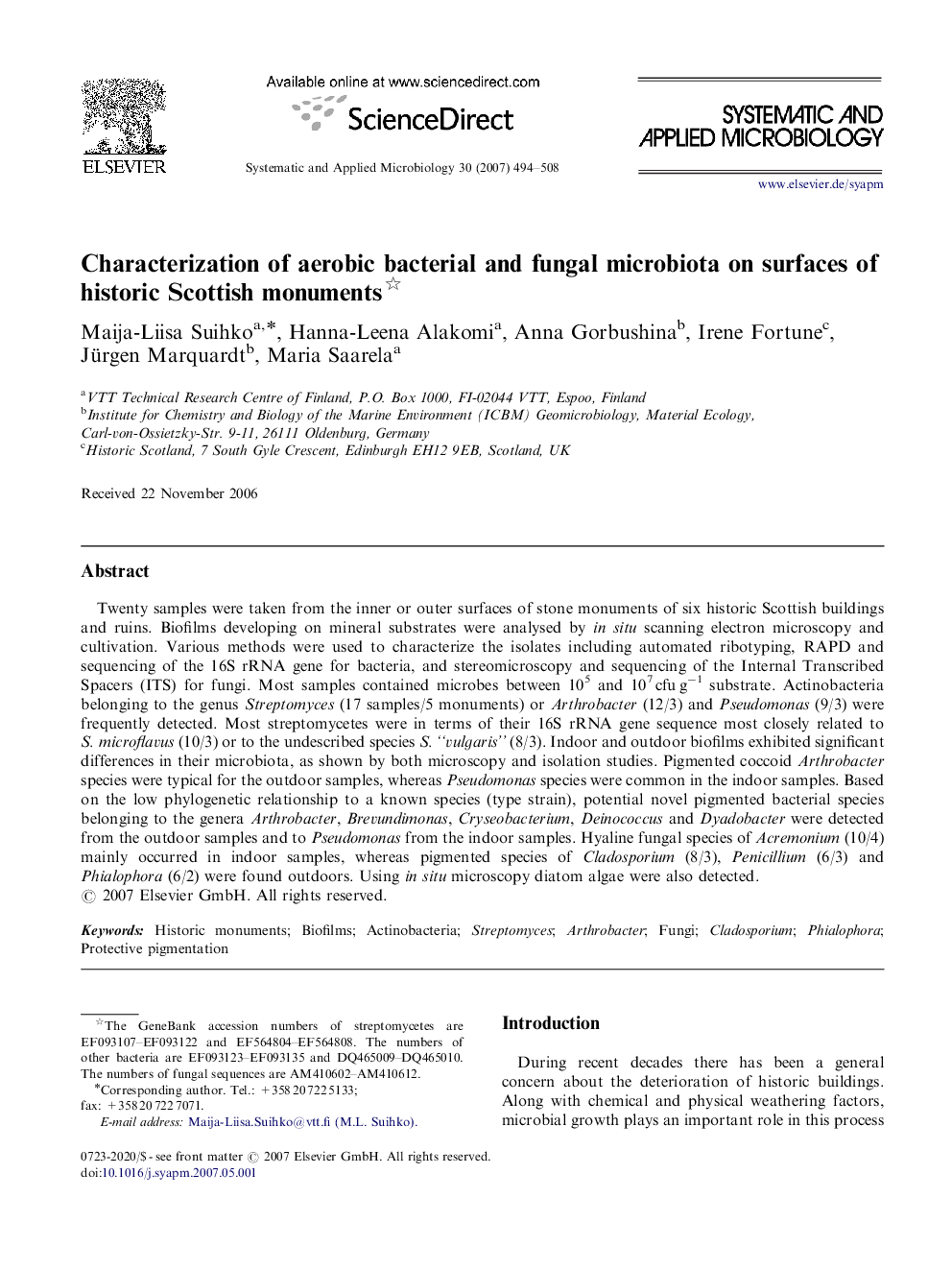| Article ID | Journal | Published Year | Pages | File Type |
|---|---|---|---|---|
| 2063600 | Systematic and Applied Microbiology | 2007 | 15 Pages |
Twenty samples were taken from the inner or outer surfaces of stone monuments of six historic Scottish buildings and ruins. Biofilms developing on mineral substrates were analysed by in situ scanning electron microscopy and cultivation. Various methods were used to characterize the isolates including automated ribotyping, RAPD and sequencing of the 16S rRNA gene for bacteria, and stereomicroscopy and sequencing of the Internal Transcribed Spacers (ITS) for fungi. Most samples contained microbes between 105 and 107 cfu g−1 substrate. Actinobacteria belonging to the genus Streptomyces (17 samples/5 monuments) or Arthrobacter (12/3) and Pseudomonas (9/3) were frequently detected. Most streptomycetes were in terms of their 16S rRNA gene sequence most closely related to S. microflavus (10/3) or to the undescribed species S. “vulgaris” (8/3). Indoor and outdoor biofilms exhibited significant differences in their microbiota, as shown by both microscopy and isolation studies. Pigmented coccoid Arthrobacter species were typical for the outdoor samples, whereas Pseudomonas species were common in the indoor samples. Based on the low phylogenetic relationship to a known species (type strain), potential novel pigmented bacterial species belonging to the genera Arthrobacter, Brevundimonas, Cryseobacterium, Deinococcus and Dyadobacter were detected from the outdoor samples and to Pseudomonas from the indoor samples. Hyaline fungal species of Acremonium (10/4) mainly occurred in indoor samples, whereas pigmented species of Cladosporium (8/3), Penicillium (6/3) and Phialophora (6/2) were found outdoors. Using in situ microscopy diatom algae were also detected.
